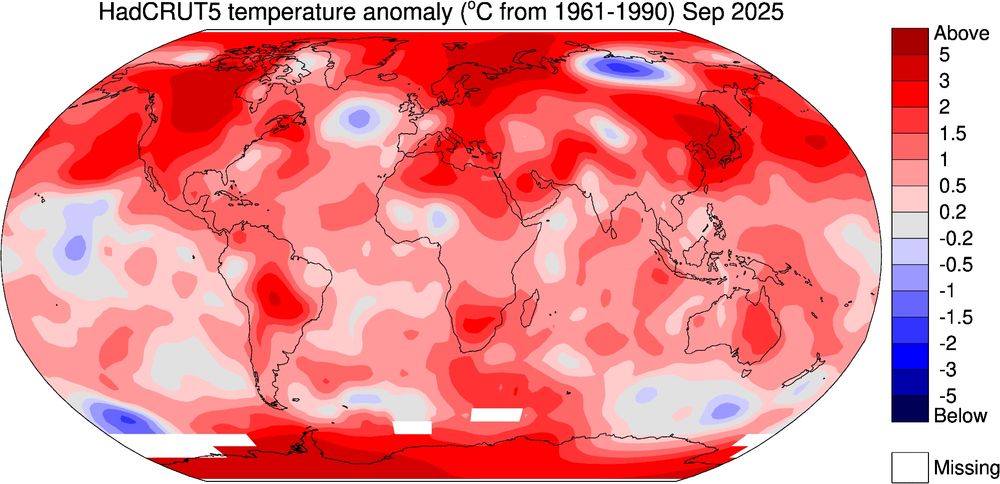
Climate scientist at the National Centre for Atmospheric Science, University of Reading | IPCC AR6 Lead Author | MBE | Views own | https://edhawkins.org
Warming Stripes: http://www.ShowYourStripes.info
Edward Hawkins is a British climate scientist who is Professor of climate science at the University of Reading, principal research scientist at the National Centre for Atmospheric Science (NCAS), editor of Climate Lab Book blog and lead scientist for the Weather Rescue citizen science project. He is known for his data visualizations of climate change for the general public such as warming stripes and climate spirals. .. more

To (almost) no-one’s surprise, multiple sources of data agree on the long-term trends in UK temperatures.
climatelabbook.substack.com/p/monitoring...
Reposted by Ed Hawkins, Carly Reddington

Many of the steps we take to tackle #climatechange can also bring immediate air-quality benefits.
When starting in 1750, the simulated climate for lengthy periods after 1850 is different from simulations started in 1850, even with the same radiative forcings.
This is mainly because of volcanoes & land use changes before 1850.
Reposted by Peter Thorne, Du Toit, Kevin J. Anchukaitis
Importance of beginning industrial-era climate simulations in the eighteenth century
Ballinger, Schurer et al.: iopscience.iop.org/article/10.1...
Reposted by Ed Hawkins, Benjamin I. Cook, Karen O’Donnell

We are advertising a project attributing causes of recent #droughts using counter-factual storylines.
Based in #Edinburgh, working with Andrew Schurer, me, @gabihegerl.bsky.social, & @edhawkins.org
tinyurl.com/5n7b52fr
Key questions: if you had a high resolution reanalysis for these islands, what would you want to use it for? What complementary observational datasets should be prioritised?
Reposted by Peter Thorne, Ed Hawkins


As usual, data can be downloaded from CRU/UEA website: crudata.uea.ac.uk/cru/data/tem...
And from Met Office/hadobs website: www.metoffice.gov.uk/hadobs/hadcr...
@climateuea.bsky.social @colinmorice.bsky.social

Until our fossil fuel use started a new phase of rising seas.
Graph shows the global mean rate of sea level rise.
🌊
www.nature.com/articles/s41...
Reposted by Peter Thorne

How would a major hurricane that hit Jamaica in 1903 be different today, in a warmer world?
It would drop more rain. (At least)
climatelabbook.substack.com/p/a-damaging...
STRENGTH: Warmer water is hurricane food
RAINFALL: Warm air holds more water vapor
SURGE: Warmer water expands, warmer ice melts, sea levels rise
PREDICTION: hotter seas mean faster intensification
Reposted by Anders Levermann

The rainfall from that storm would have been more intense in today’s warmer climate.
#Melissa will likely drop more rain now than it would have done a century ago.
climatelabbook.substack.com/p/a-damaging...
Reposted by Peter Thorne

Our reanalysis-based approach (esd.copernicus.org/articles/14/...) can examine how that storm would be different in a warmer world like today.
Then & now precipitable water fields show heavier rain would be likely.
#Melissa
www.climate-lab-book.ac.uk/2020/wanted-...

Listen from about 14mins:
www.bbc.co.uk/sounds/play/...

